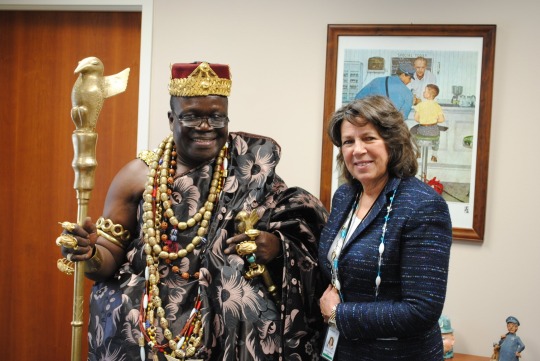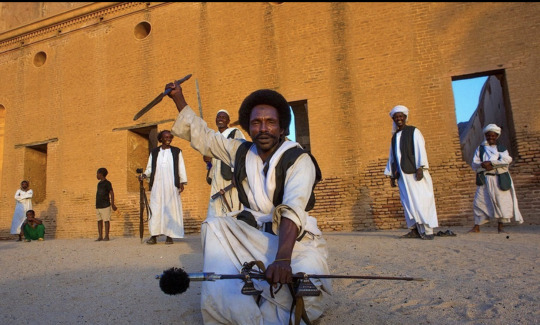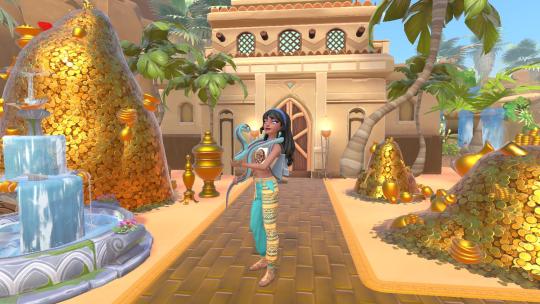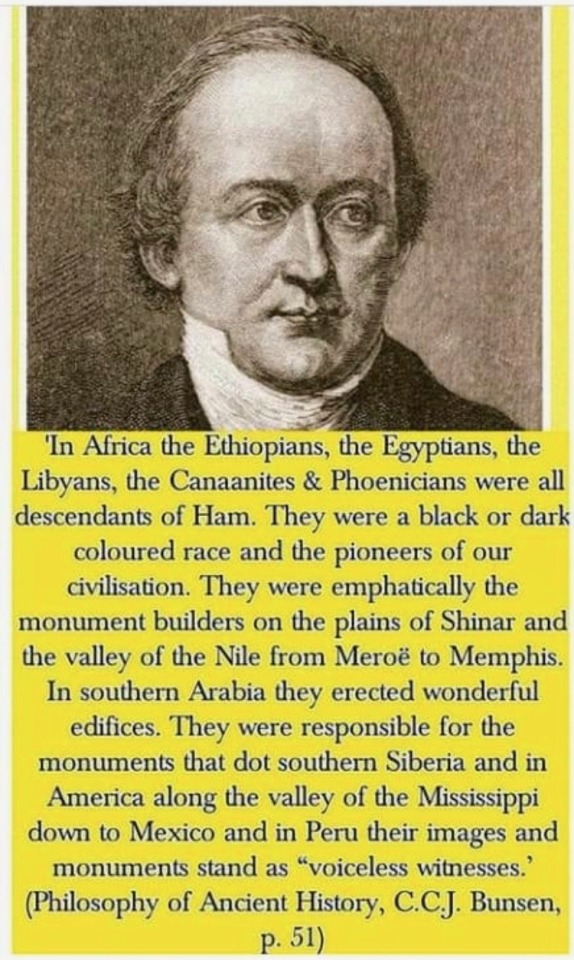#nile valley
Photo






The human remains discovered at Jebel Sahaba, (a southern Egyptian site associated with the 15,000-year-old Qadan culture) had a cranial match to the Ashanti people of West Africa - as seen in this study below.
Why do the Ashanti people still dress this way?
Lets try and connect the dots here.
The Qadan culture is over 14,000 years old.
The human remains found in the Jebel Sahaba site (associated with the Qadan culture) showed cranial affinities to modern West Africans
Modern West Africans are STILL displaying cultural affinities to the Egyptian Pharaonic culture (which is merely a chieftainship).
If West Africans are from the prehistoric period associated with Qadan culture, and yet they STILL have the Pharaonic culture, the Pharaonic culture must be over 14,000 years old (seeing that the Qadan culture was also 14,000 years old).
The obvious answer is that the people of the Qadan culture started the Pharaonic culture but were absorbed by other groups carrying West Asian genes.
This invalidates the claim that the ancient Egyptian Pharaonic culture started in 3000 BC.
The Pharaonic culture (which is merely a culture of kingships and chieftainships) already existed throughout the agricultural tribes in Africa. Even the hunter-gatherer and proto agricultural tribes in Papua New Guinea who carry very old haplogroup C, show similar culture of chieftainship deep inside their jungles.
Most likely, in prehistory, these tribes found in the tropics used biodegradable materials to dress their chiefs and kings (as seen in the below image). Such materials can’t be unearthed in archeology if they’re already degraded.
Mainstream academia can only use guesswork. For all we know, those cultures of the tropics could have been around for tens of thousands of years, going back 40,000 years ago. But archeologists can never determine how long they’ve had the culture since all evidence is degraded.
Even now, the Sahara, where farmers once lived, is all but sand. Archeologists have no clue what happened during the periods of the green Sahara since all the evidence is gone.
The obvious answer is that all of these cultures could have existed in the tropics for tens of thousands of years. Mainstream academia has a long way to go when it comes to studying the history of the tropics. They have based all their studies in regions of the world with moderate climate. All they can tell us so far is a history that goes back to 11,000 BC, of which they always focus on the Middle East.
The culture and traditions of the tropics only arrived in Europe after a group of nomadic West Eurasians (linked to the ancestors of Berbers) migrated south at the end of the ice age and absorbed the tribes of the tropics who were crop cultivators and horticulturalists. The absorption created a mixed population similar to Ethiopians, who carried the E1b1b haplogroup into Europe and took the new culture and cultivation techniques back into Europe, which was later spread by the Anatolians.
The migrants also carried a new set of genes with an African MtDNA, as in the below.
#ashanti#african#africans#kemetic dreams#euraasians#sahara#western asia#north africa#north african#nile valley#hopi
137 notes
·
View notes
Text
How did Ancient Egypt become so powerful so quickly? Much of its early success was thanks to fertility of the Nile Valley and Egypt’s abundance of agriculture.
22 notes
·
View notes
Text
Portraits of Egyptians before British Colonization
#egypt#kemet#ta merry#nubia#nile valley#north africa#africans#indigenous peoples#photography#zangaki brothers#1800s#1900s#colonization#colonialism#🇪🇬#🐪#🌴
8 notes
·
View notes
Photo

https://artsexperiments.withgoogle.com/meroe/?hl=en#top
#Meroe#Sudan#Nubian Pyramids#Kushite#Kingdom of Kush#architecture#Nile Valley#Africa#pyramaid#pyramids
25 notes
·
View notes
Text
The Black History Book: Big Ideas Simply Explained Click to DOWNLOAD FOR FREE ON Z-LIB

Discover the rich and complex history of the peoples of Africa, and the struggles and triumphs of Black cultures and communities around the world. With profiles of key people, movements, and events, The Black History Book brings together accounts of the most significant ideas and milestones in Black history and culture.
This vital and thought-provoking book presents a bold and accessible overview of the history of the African continent and its peoples - from the earliest human migrations to modern Black communities and the African diaspora.
Powerful images and innovative infographics bring to life the stories of the early kingdoms of Ancient Egypt, Nubia, and Carthage; the powerful empires of the Medieval and Early Modern eras; and the struggle against European colonizers. Black history and culture beyond the African continent is also explored in detail - including the Atlantic Slave Trade; the quilombos (slave resistance camps) of Brazil; the Harlem Renaissance and Jazz Age; the "Windrush" migration; Civil Rights and Black feminist movements; and Black Lives Matter.
Using the "Big Ideas" series' trademark combination of authoritative, accessible text and bold graphics, The Black History Book examines the achievements and struggles of Black communities across the world up to the modern day, as well as the influence of Black cultures on art, literature, and music the world over.
10 notes
·
View notes
Text
This region of the Sahel is key for understanding the connection between Ancient Nile Valley and modern African populations.
3 notes
·
View notes
Text

IMITATION OF STONE
Naqada Il (mid), C. 4000-3000 BC.
“Squat jars with barrel-lug handles for suspension. Fine marl A, variant 4, uneven surface colour pale yellow (5 Y 7/3) to light brown (7.5 YR 6/4) with spots of pink. Handmade in two parts, joined at top of shoulder. Turning marks immediately below rim, and finger marks inside.
Lug handles and ledge rim applied. Self slip applied with brush under painted design in weak red (2.5 YR 4/2). a.
Design consists of parallel lines- continuous semicircles covering exterior, handles and rim. b, Spirals and short zigzag lines, with cross-hatching on rim.”
2 notes
·
View notes
Text
The History and Influence of the Blemmyan kingdom & Blemmyes
The Blemmyan kingdom and the Blemmyes have left an indelible mark on history, shrouded in mystery and fascination. The ancient kingdom of the Blemmyes, also known as the Blemmyan, is a testament to the rich tapestry of African history and the enduring legacy of its people.
Situated in the Nile Valley, the Blemmyan kingdom thrived from around the 5th century BC to the 4th century AD, encompassing…

View On WordPress
#African empire#African empires#African History#African kingdom#african kingdoms#Beja people#Beja society#Blemmyan kingdom#Blemmyes#Cushitic ethnic group#Nile Valley#Nile Valley civilisation
0 notes
Text
Found a really cool interactive website where you can use augmented reality to visit Pyramids of Meroë:
#archaeology#pyramids of meroë#interactive website#kushite kingdom#pyramids#sudan#nile valley#nubians#nubia#ancient history
0 notes
Text
stardew valley 1.6 call that the moss update
#stardew valley#THERE ARE SO MANY NEW ITEMS TO CRAFT AND ALL OF THEM REQUIRE MOSS. I HAVE NO IDEA HOW OR WHERE TO GET MOSS#nile talks
24 notes
·
View notes
Text

i very well might do something completely different later, but for the monster challenge this week, here's cleo, who is my most favorite monster
12 notes
·
View notes
Text




#african#afrakan#kemetic dreams#africans#brownskin#brown skin#afrakans#african culture#afrakan spirituality#north africa#best memes#Nile valley#Memphis#ham
18 notes
·
View notes
Text
The Kingdom of Kerma was an ancient civilization that existed between 2500 BC and 1500 BC, located in what is today the northern part of Sudan. This kingdom has been regarded as the first Nubian state, and its capital, Kerma, is today an important archaeological site.
#Kerma#Ruins#Nubia#egypt#pharaoh#Nile Valley#Africa#Sudan#Kush#deffufa#monument#ancient#history#ancient origins
41 notes
·
View notes
Photo

The Rape of the Nile: Tomb Robbers, Tourists, and Archaeologists in Egypt
#ancient egypt#nile valley#grave robbers#tourism#egyptology#archaeology#iconoclasm#agnotology#colonization#books
37 notes
·
View notes
Text
The difference between the three Kenneth Branaugh Poirot movies is so wild. You have Murder on the Orient Express which is a perfectly average adaptation, neither particularly good but not egregiously bad either, and a perfectly average movie erring on the side of hamming it up a bit. You have Death on the Nile which is a kill it with fire dumpster of an adaptation without even having the benefit of being an entertaining movie to boot. And then you have A Haunting In Venice which is a legitimately innovative adaptation and a well-crafted movie besides. Please let them all be like A Haunting in Venice from now on.
#the valley is posting#just watched a haunting in venice the other day without much high hopes since death on the nile was so terrible#and was astonished how good of a murder mystery it was and how much it captured the spirit of an agatha christie story#despite only being a loose adaptation of a halloween party#hopefully the fact that it's the most recent one means that branaugh's learned from the mistakes of the first two#and future poirot movies are going to follow this movie's precedent
7 notes
·
View notes
Video
youtube
Nile Valley Contributions to Civilization | Anthony T. Browder
#Anthony Browder#Nile Valley#Egypt#Nile Valley Contributions to Civilization | Anthony T. Browder#african spirituality
3 notes
·
View notes